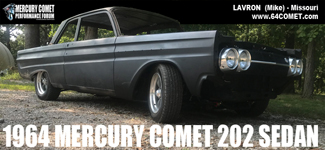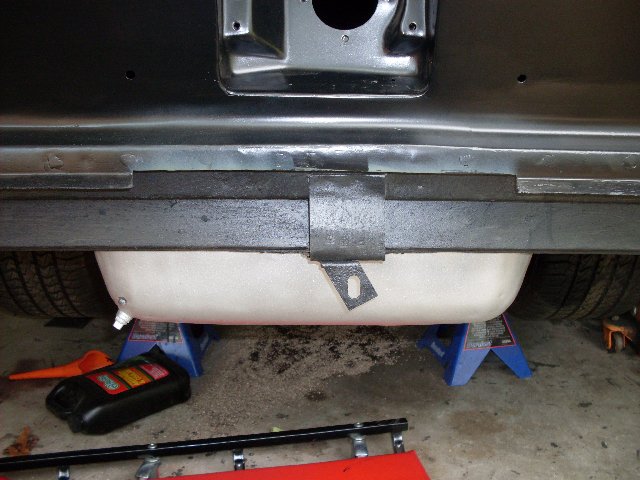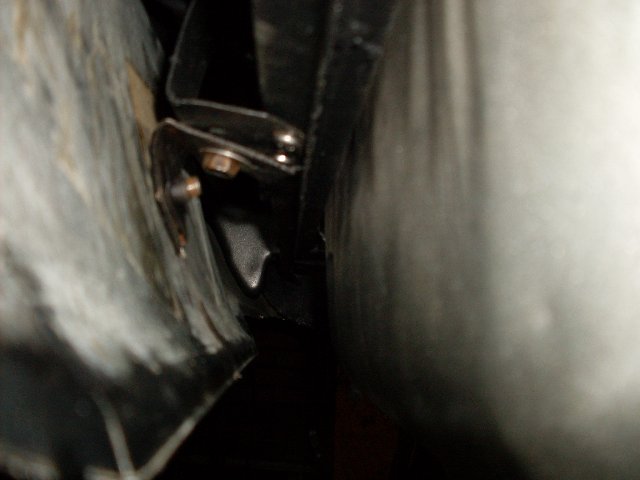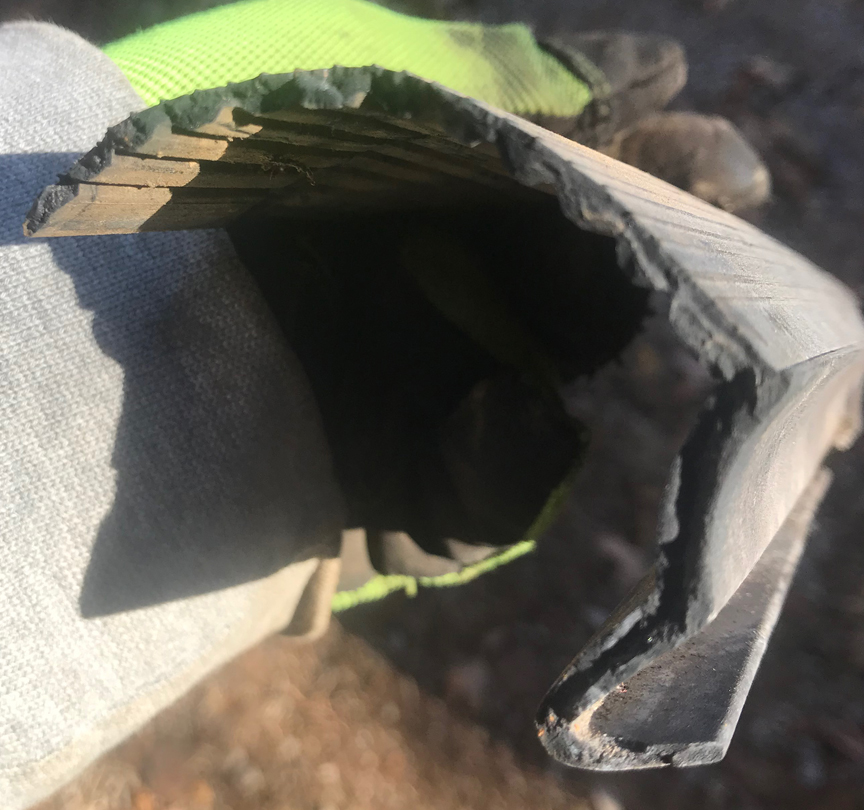It would be super helpful to see a picture if anyone has a good photo of a final/correct (or factory) install.
I have read through a bunch of posts in the forum... and done a bunch of research on my own... and unfortunately my car did not have one of these installed for me to use as a guide.
I have questions about Orientation, Fasteners, Adhesive and finally Trimming (Length):
Orientation:
In GeneB's how to install body to bumper seal on 63 Comet, poboyjo65 comments "...the groove that is on top...goes on the flange of the car." Meanwhile the MPC illustrations clearly indicate that the upper side is textured - which implies a specific orientation. [Edit: Later in this thread I post images of the MPC illustrations which seem to imply an orientation that is consistent with my picture.]
Question 1: Is the below picture correct?

Fasteners:
In Goover's Rear Bumper Gasket??, Lou Ripper's WTH? and albert's Ford Metuchen NJ building 65 Comets there is discussion of installing staples. My car's flange has holes for staples (good) and my repop part included staples (good)... however it also includes two self tapping sheet metal screws.
Question 2: Where do the two screws go?
At first I thought perhaps the seal wraps around the corner to the screw hole on the side of the quarter panel (as seen in the above picture - upper right). However, if my orientation is correct (ahem) then the hole around the side is a goofy candidate because the seal does not wrap nicely around that corner and up to that screw hole. Furthermore I think those holes serve some other purpose that I will later discover (or one of you will remind me now
Meanwhile the Comet MPC nor Shop Manual give any guidance... however the Falcon MPC illustration does show two screws in the middle (though that illustration also seems pretty error filled - it indicates that both the flange and seal have a raised ridge at the middle (above license plate) rather than the seemingly correct 'straight through'). [Edit: Per my below comments, I later discovered that indeed (much to my surprise) the Falcon and Comet have different "Lower Back Panel" sheet metal body parts.]
If indeed the screws are supposed to go through the holes in the middle (per below picture's penciled red arrows) then the choice of a self tapping screw seems super strange because that would mean the screw would pierce the sheet metal *before* then screwing into the rubber... which isn't going to hold very securely. Surely they didn't screw in from the backside - that would be nearly impossible reach, not to mention the sharp ends of the screws would be pointing outward.

Adhesive:
As far as I can tell, none of the threads here in the forum discuss whether or not weatherstrip adhesive was used.
Question 3: Is there supposed to be weatherstrip adhesive along the flange?
Trimming (Length?):
In Groover's Rear Bumper Gasket?? thread, albert advises "Make sure you try to keep your old [seal] in good shape when you remove it, you will need to use it as a guide on where to make the cuts." (My car did not have a seal here when I took delivery years ago).
The Comet MPC describes C5GY-17808-A as "67-3/4" long" whereas the Falcon MPC describes C4DZ-17808-A as "Rubber - 73 1/2" long." The repop C4DZ-17808-A I received (Dennis Carpenter) is 72 1/4" on the long edge and 68 1/4" on the short edge. Meanwhile the (gapped) flange on my car is 59" wide (total). If I was to keep the same trim angle as the repop and then cut the short (upper) edge to 59" the long (lower edge) would end up 63."
None of these dimensions seem to match up. And the relatively narrow 59" wide flange on my car implies that either (a) the seal was indeed suppose to wrap around the corners of the car or (b) the seal is supposed to be trimmed (seemingly as per albert's comment).
Question 4: How long is the seal suppose to be? ... and if the answer is greater than 59" on the short edge then how is installation achieved on the corners?
[Edit: Per my below comment, I later discovered in 1962comet's Help Identify These Parts thread, that mercurycyclone comments the following regarding this part for 1962 & 1963 Comet 2 & 4 door sedans and 63 Convertible: "..the parts book says it is 78" long "cut to fit"." I conclude that the same must be true for the 1965 parts - and for whatever reason the 1965 parts books just omitted the "cut to fit" part. Obviously the question still remains as to what length they are supposed to be trimmed (again, do they wrap around the corners or stop at the vertical body seals?).
Thanks,
kevin

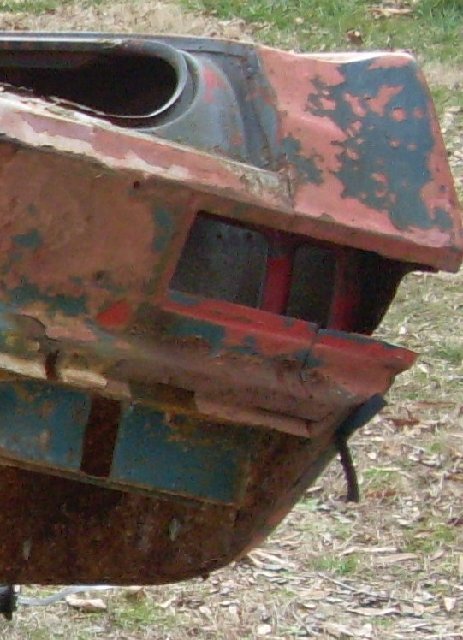








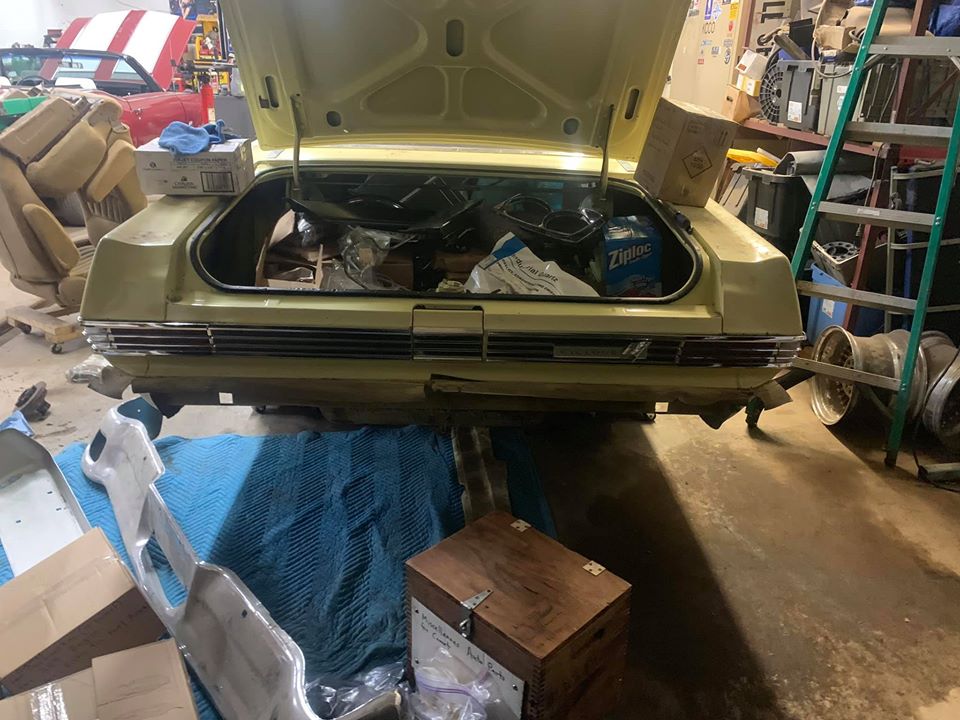
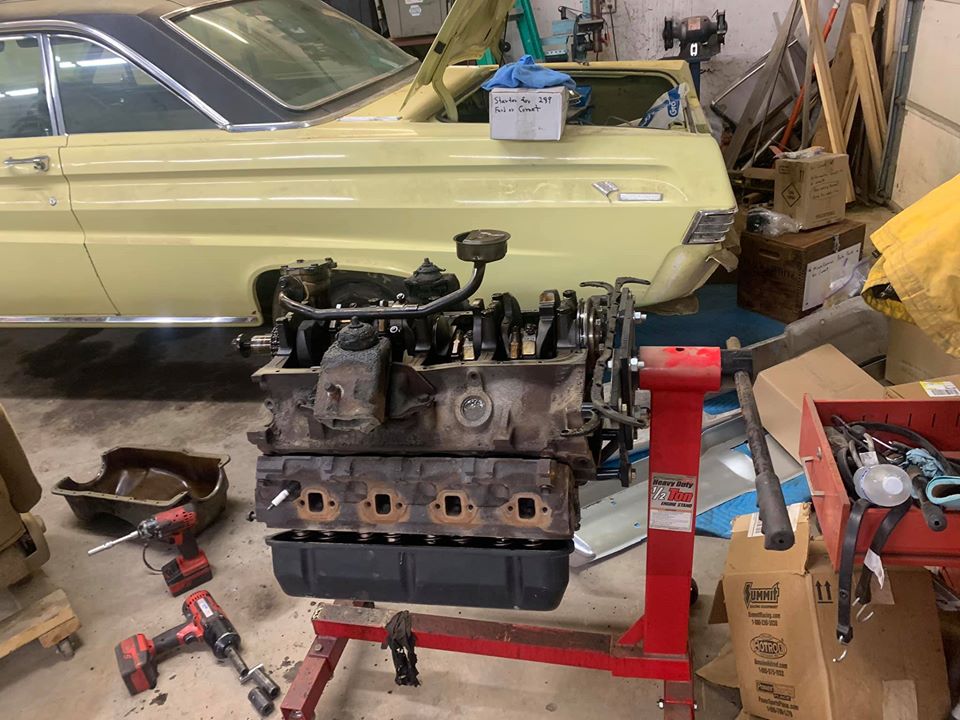
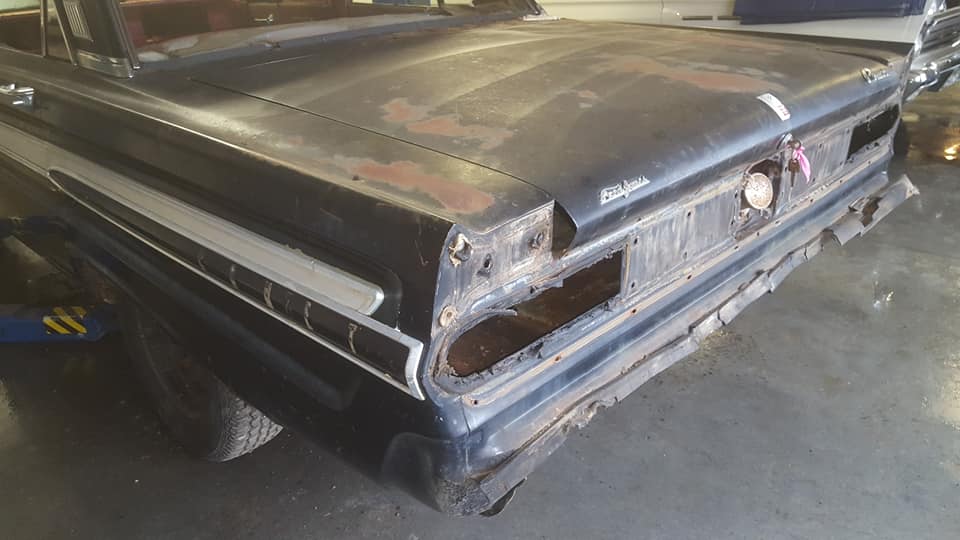 [/ur]
[/ur]
